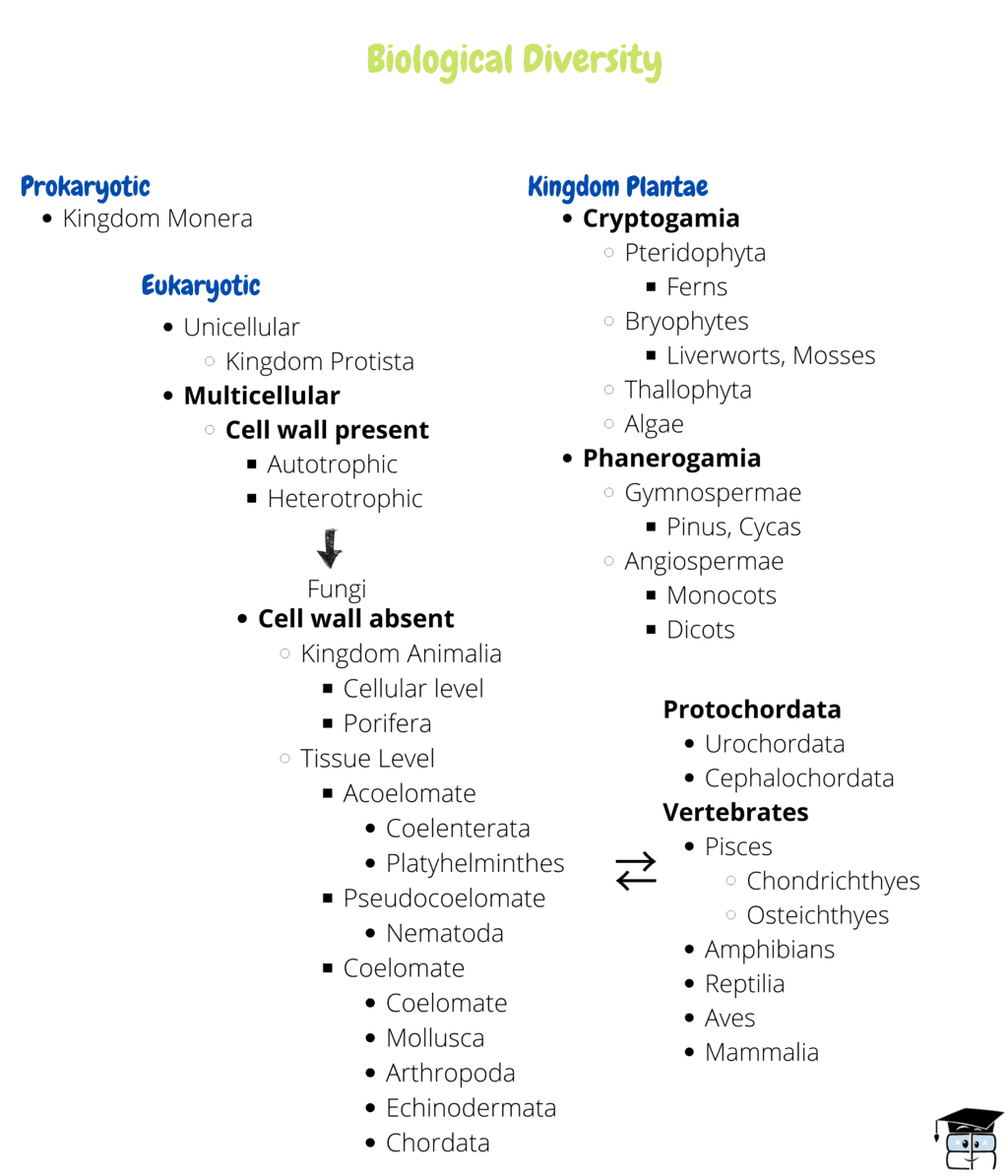Class 9 Exam > Class 9 Notes > Subject-Wise Mind Maps for Class 9 > Mind Map: Diversity in Living Organisms
Mind Map: Diversity in Living Organisms | Subject-Wise Mind Maps for Class 9 PDF Download

The document Mind Map: Diversity in Living Organisms | Subject-Wise Mind Maps for Class 9 is a part of the Class 9 Course Subject-Wise Mind Maps for Class 9.
All you need of Class 9 at this link: Class 9
FAQs on Mind Map: Diversity in Living Organisms - Subject-Wise Mind Maps for Class 9
| 1. What is diversity in living organisms? |  |
Ans. Diversity in living organisms refers to the wide variety of different species, their characteristics, and the ecosystems they inhabit. It includes the differences in terms of morphology, anatomy, physiology, behavior, and genetic composition among organisms. This diversity is essential for the stability and functioning of ecosystems.
| 2. Why is it important to study diversity in living organisms? |  |
Ans. Studying diversity in living organisms is important for several reasons. Firstly, it helps us understand the evolutionary relationships between different species and how they have adapted to their environments. This knowledge is crucial for conservation efforts and understanding the impact of human activities on biodiversity. Additionally, studying diversity allows scientists to discover new species, understand ecological interactions, and develop applications in fields such as medicine, agriculture, and biotechnology.
| 3. How do scientists classify living organisms? |  |
Ans. Scientists classify living organisms using a hierarchical system called taxonomy. This system categorizes organisms into various levels, including kingdom, phylum, class, order, family, genus, and species. Organisms are classified based on their similarities in terms of morphology, anatomy, genetics, and evolutionary relationships. The classification system helps in organizing and understanding the vast diversity of living organisms.
| 4. What are the major kingdoms of living organisms? |  |
Ans. The major kingdoms of living organisms are:
1. Kingdom Animalia: Comprising multicellular, heterotrophic organisms that obtain nutrients by ingestion.
2. Kingdom Plantae: Consisting of multicellular, autotrophic organisms that carry out photosynthesis.
3. Kingdom Fungi: Including multicellular or unicellular organisms that obtain nutrients by external digestion and absorption.
4. Kingdom Protista: Comprising unicellular or simple multicellular organisms with diverse characteristics.
5. Kingdom Monera: Consisting of unicellular organisms, including bacteria and archaea.
| 5. How does diversity in living organisms contribute to ecosystem stability? |  |
Ans. Diversity in living organisms contributes to ecosystem stability by promoting resilience and balance. Each species plays a unique role in the ecosystem, such as providing food, regulating populations, decomposing organic matter, and maintaining nutrient cycles. A diverse ecosystem can better withstand disturbances, such as climate change or the introduction of invasive species, as the loss of one species can be compensated by others. Additionally, diverse ecosystems tend to be more productive and have higher resistance against diseases and pests.
Related Searches





















